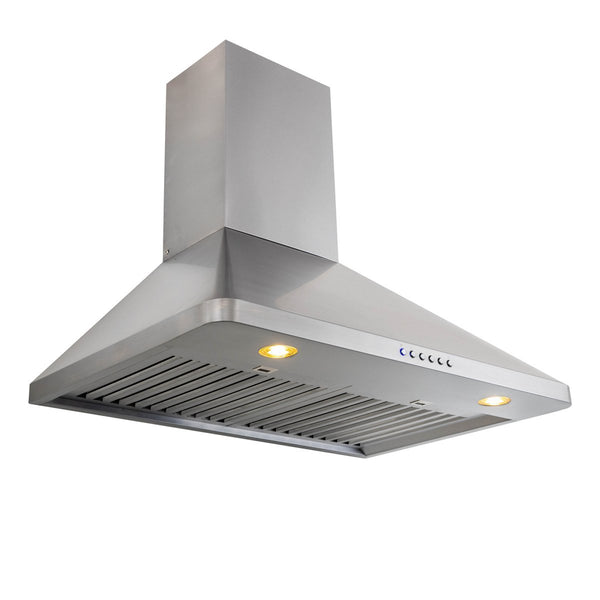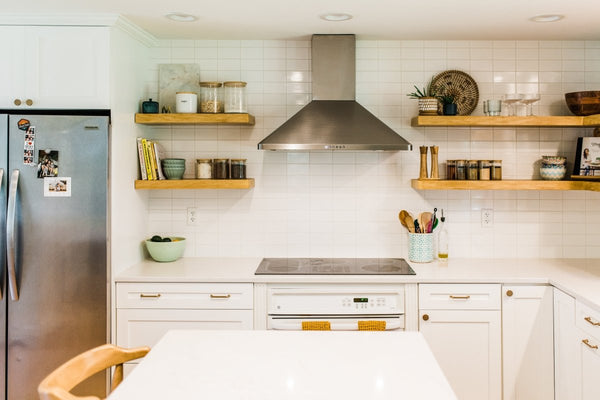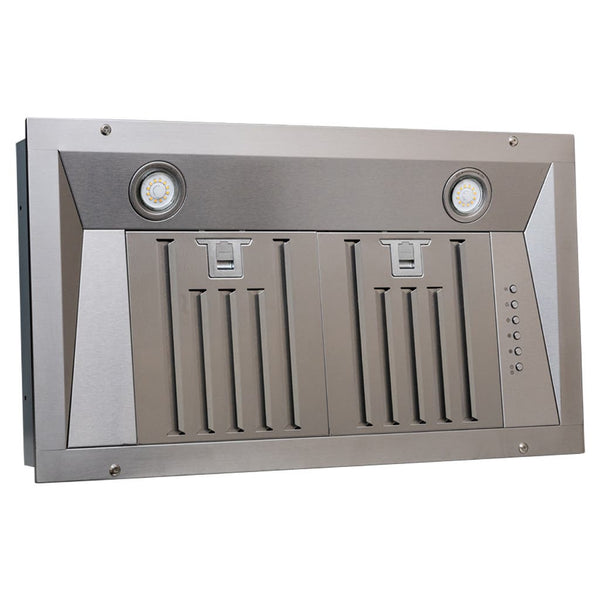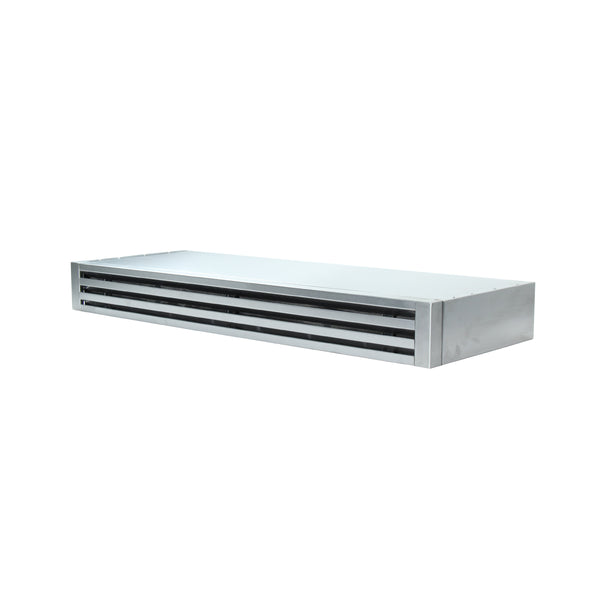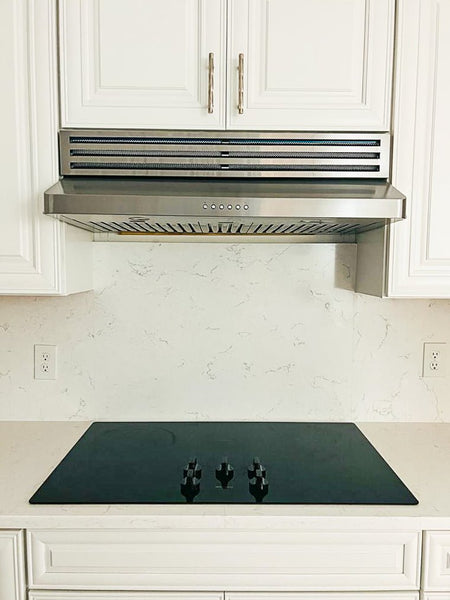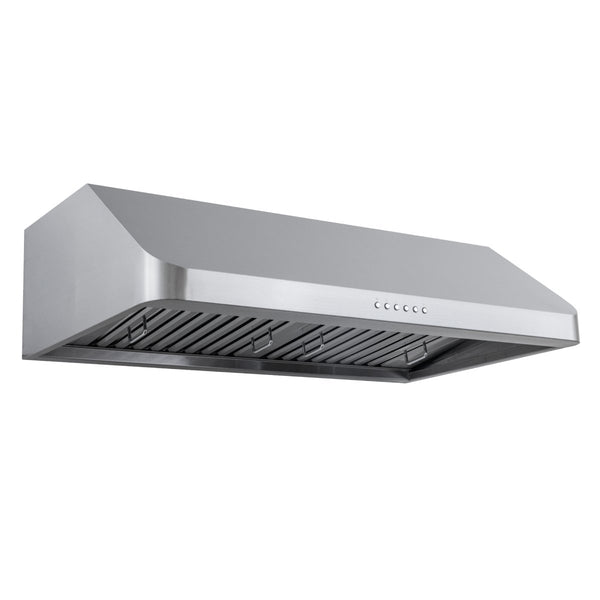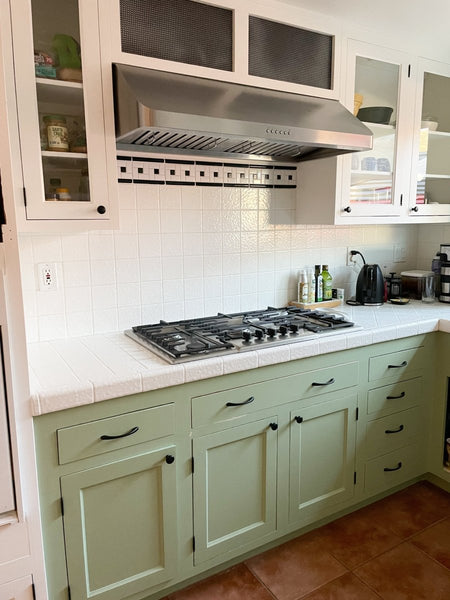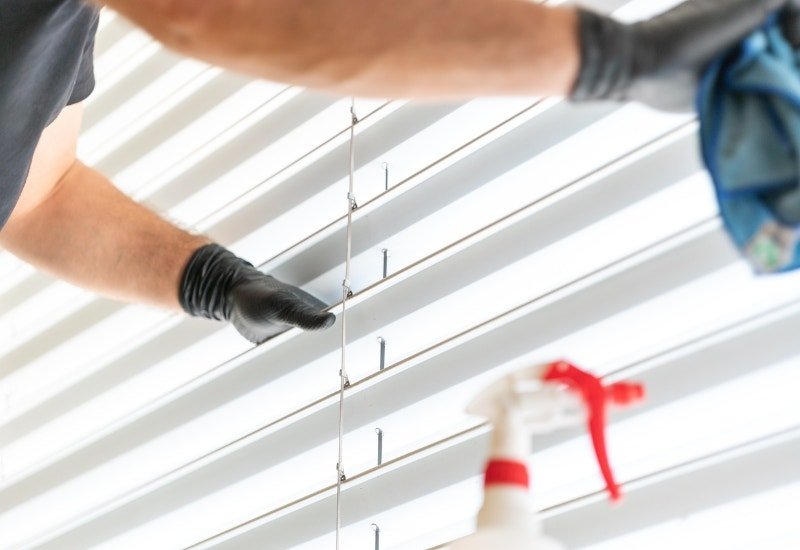Greasy blinds can be a real eyesore in your home, not to mention a magnet for dust and allergens. Over time, cooking fumes, smoke, and even dirty hands can leave your blinds looking less than fresh. Fortunately, there are effective ways to clean them that won't require too much time or effort from you.

Before diving into the cleaning process, it's essential to determine the exact type of blinds you have - whether they are wood, faux wood, plastic, or aluminum. The cleaning methods for these materials can vary, and using the wrong technique could potentially damage your them. Once you know the material, gather some basic cleaning supplies like a microfiber cloth, warm water, dishwashing soap, and a vinegar-water solution for stubborn grime. Now, you're ready to tackle those greasy blinds and restore their original shine.
Why Clean Greasy Blinds
Greasy blinds can be a real eyesore and a breeding ground for dust and germs. Regularly cleaning them not only keeps them looking fresh and new, but it also eliminates the accumulation of grease, dust, and allergens. In this section, you'll discover why it's essential to clean greasy blinds and some tips for effective cleaning.
The buildup of grease on your blinds can occur for several reasons, such as proximity to a kitchen or frequent cooking activities. Grease particles in the air can cling to them, resulting in a sticky, grimy surface that attracts dust and becomes challenging to clean. Additionally, this buildup can cause allergies and respiratory issues for you and your family.
Check out our ratings of the top kitchen degreasers on the market today here.
Using a microfiber cloth is an excellent choice for cleaning greasy blinds because they are highly effective at removing dust, dirt, and grease without causing surface damage. Microfiber cloths are gentle on delicate materials, but their unique structure enables them to break down and remove stubborn grease and grime with ease.
Here are some helpful tips for cleaning greasy blinds:
- Close your blinds before cleaning to access all the slats more easily
- Use a microfiber cloth or a specialized blind duster to remove surface dust
- Dampen the microfiber cloth with a mixture of warm water and mild detergent for more thorough cleaning
- Wipe each slat individually, ensuring all grease and dirt are removed
- Rinse the microfiber cloth frequently to avoid spreading the grease
- For heavily soiled blinds, consider soaking them in a tub with warm, soapy water
Remember not to use abrasive materials or harsh chemicals when cleaning them, as they can damage their surfaces. Stick with gentle cleaning methods, such as using a microfiber cloth, to maintain the beauty and longevity of your blinds.
Types of Blinds and Cleaning Requirements
Blinds come in various materials and styles, each with its specific cleaning requirements.
Wood Blinds
Wood blinds are a timeless and elegant choice for window coverings. However, they can be sensitive to moisture and heat. To clean them, use a microfiber cloth or vacuum with an upholstery attachment to remove dust. Avoid using water or harsh chemicals, as they may damage the wood finish.
Faux Wood Blinds
Fill a bucket with warm water and a little dishwashing soap. Lightly dip a microfiber cloth or clean sock into the soapy water and gently wipe each slat. Make sure not to soak them, as excess water can cause warping or damage to the material.
Fabric Blinds
Use a vacuum with an upholstery attachment to remove dust. If they need a deeper clean or spot treatment, consult the manufacturer's instructions for proper care, as some fabric blinds can be spot cleaned or even machine washed.
Plastic Blinds
Try soaking them in a bathtub filled with cold water and liquid bleach for about 10 minutes. Rinse thoroughly and let them air dry before rehanging.
Vertical Blinds
Typically found covering sliding glass doors or large windows, vertical blinds require regular dusting to prevent the build-up of dirt. You can use a duster, microfiber cloth, or vacuum to remove the dust. For a deeper clean, wipe each slat with a damp cloth, taking care not to damage any attached weights or chains.
Pre-Cleaning Steps
Before diving into deep cleaning your greasy blinds, it's crucial to take some pre-cleaning steps, like vacuuming and dusting off the blinds. These steps will remove loose dirt and dust, making the cleaning process more effective.
Vacuuming the Blinds
First, grab your vacuum cleaner and prepare to vacuum your blinds. Canister vacuums with a brush attachment work best for this task.
- Extend your blinds completely and close them, so the slats lie flat.
- Starting from the top, gently run the vacuum brush attachment along the slats, working your way to the bottom. Be careful not to apply too much pressure, as it can damage them.
- Repeat the process on the other side of your blinds by reversing their direction, ensuring all areas have been vacuumed.
Dusting off the Blinds
After vacuuming, it's time to dust off your blinds using a duster or a microfiber glove. A feather duster can also be effective in this step.
- Extend your blinds completely and close them, so the slats lie flat.
- Starting from the top, lightly run your duster or glove along each slat, moving from one end to the other, making sure to collect any dust or debris.
- Remember to dust off both sides of your blinds by reversing their direction.
- Shake out your duster or glove as needed to avoid redistributing dust onto the blinds.
By vacuuming and dusting your blinds before deep cleaning, you'll have already conquered most of the dirt and dust buildup. The following steps will make your cleaning process both more focused and effective, leaving them sparkling clean and grease-free in no time.
Cleaning Solutions
When it comes to cleaning greasy blinds, there are several solutions you can try. Below are three common methods that you may find helpful: Soap and Water, Vinegar and Water, and Baking Soda and Water. Remember to always work with patience and care to avoid damaging them.
Soap and Water
A simple yet effective solution for cleaning greasy blinds is using soap and warm water. Follow these steps:
- Fill a bucket with warm water and add a few drops of mild dish soap.
- Dip a soft sponge or microfiber cloth in the soapy water.
- Gently wipe each slat of the blinds to remove dirt and grease.
- Rinse the sponge in clean water and wipe each slat again to remove any soap residue.
- Dry the slats with a clean microfiber cloth.
Vinegar and Water
White vinegar can effectively cut through grease and grime on your blinds. Here's how you can use a vinegar and water solution:
- Mix equal parts warm water and white vinegar in a bowl or bucket.
- Add a few drops of mild dishwashing soap.
- Dip a soft sponge or cloth in the solution.
- Carefully wipe each slat of the blinds, ensuring the vinegar solution removes the grease.
- Finish by wiping each slat with a dampened sponge in clean water to remove any vinegar residue.
Baking Soda and Water
Baking soda is another effective cleaning agent that can help remove stains and grease from your blinds. Follow these steps:
- Fill a bathtub or large basin with warm water.
- Add a generous amount of dishwashing soap.
- Mix in one cup of baking soda.
- Place the blinds in the solution, ensuring they are fully submerged.
- Soak your blinds for an hour, then rinse them off with warm water.
Baking soda has stain-removing properties that can help restore the appearance of your greasy blinds.
Deep Cleaning Process
Cleaning in Bathtub
For a deep clean of your greasy blinds, start by removing them from the window and placing them in your bathtub. Fill the tub with warm water and add a generous splash of white vinegar, which will help break down the grease. Gently submerge them in the mixture, ensuring they are fully covered. Leave them to soak for at least an hour to allow the vinegar and water to work their magic.
While the blinds are soaking, prepare a microfiber cloth by soaking it in warm, soapy water. After the hour has passed, gently scrub them with the damp cloth to remove any remaining grease and grime. Be sure to clean each slat individually, paying attention to both sides. Once you've thoroughly cleaned the blinds, drain the bathtub and thoroughly rinse the blinds with clean water to remove any soap residue.
Spot Cleaning Stains
Sometimes, your blinds may only have a few stubborn stains that require spot cleaning. In this case, you can use a mixture of equal parts water and white vinegar. Here's how:
- Combine equal parts water and vinegar in a spray bottle.
- Spray the solution directly onto the stained areas.
- Allow the solution to sit for a few minutes to break down the grease.
- Gently scrub the stained area with a microfiber cloth.
- Rinse the cloth in warm water and wipe the area again to remove any remaining residue.
Remember to follow these tips:
- Always use a microfiber cloth when cleaning, as it is gentle on the blinds and effectively removes grease and grime.
- Test the water and vinegar solution on an inconspicuous area of the blind first to ensure it won't damage the material.
- Dry the blinds thoroughly after cleaning to prevent any watermarks.
By following these steps, you will have clean and grease-free blinds in no time, without the need for any harsh chemicals or excessive scrubbing.
Drying and Reassembling Blinds
Once you have cleaned your greasy blinds, it's essential to dry them properly before reassembling them. Proper drying helps avoid streaks and spots on the surface, ensuring a clean and polished finish.
Firstly, gently shake the blinds to remove any excess water. This step is particularly crucial for aluminum blinds or mini-blinds since they are lightweight and easily movable. Next, take your clean towels and carefully pat-dry the blinds. For wood and faux-wood blinds, pay special attention to each slat, front and back, so no moisture is left behind.
Now, it's time to air-dry your blinds. If possible, hang them back up in their original position near the window, as this will allow air to circulate around them and help them dry faster. Ensure they are fully extended and opened to expose as much surface area as possible for drying. Alternatively, you can also hang them outside or place them in your garage to air-dry.
While waiting for your blinds to dry, you can use this time to wipe down any hardware, such as the brackets or hooks, with a clean towel. Doing so will remove any residual dirt and grease that might have been overlooked during the cleaning process.
Once your blinds are completely dry, carefully reattach them to the brackets or hooks in the window. Make sure they are secure and functioning correctly. Finally, run your fingers along the slats one last time to ensure a spotless finish, and your blinds should now look as good as new!
Additional Cleaning Tips
In this section, we'll explore some helpful tips to enhance your blind cleaning experience and leave your window blinds looking fresh and free of grime.
Removing Streaks
Greasy streaks can be a particularly stubborn problem on kitchen blinds. To tackle this issue, make a 50/50 solution of warm water and white vinegar in a bowl or bucket and mix in a little mild dishwashing soap. Dip a sponge in the solution and gently scrub each slat, ensuring you cover both sides. Rinse the sponge in clean water and wipe the slats once more to leave them streak-free.
Using Furniture Polish
A handy tip for maintaining the cleanliness of your wood or faux-wood blinds is using a small amount of furniture polish. Lightly spray the polish onto a clean microfiber cloth or sock and gently rub each slat to remove grease, residue, and dust build-up. This will effectively clean your blinds while providing a protective barrier, preventing dust from settling on the surface.
Cleaning Pet Hair
Pet hair can easily accumulate on your blinds, especially if you have pets that love to sit by the window. To clean pet hair from your blinds:
- Close the blinds completely.
- Use a vacuum cleaner with a soft brush attachment to gently remove pet hair, working from top to bottom.
- Alternatively, use a lint roller or microfiber cloth, sweeping downwards to easily capture the pet hair.
Maintaining Clean Blinds
To keep your blinds looking pristine, we suggest incorporating a few simple steps into your weekly cleaning routine:
- Regularly dust your blinds using a microfiber cloth, feather duster, or vacuum cleaner with a soft brush attachment.
- For an extra touch of freshness, gently rub dryer sheets on the slats to prevent static charge, which attracts dust and pet hair.
- Check blinds for any spots or stains that may need extra attention, and use appropriate cleaning methods to treat them.
By following these additional cleaning tips, you can ensure your window blinds look great and stay free of grease, pet hair, and stubborn streaks. Happy cleaning!
7 FAQs
1. What is the best cleaning solution for greasy blinds?
A 50/50 mix of warm water and white vinegar will effectively cut through the grease on your blinds. Add a little mild dish soap to boost the cleaning power.
2. Can I clean my blinds without taking them down?
Yes, you can. First, close the blinds and dust them off with a microfiber cloth or duster. Then, dip a clean sock or cloth in the cleaning solution and wring it out. With your hand covered, gently run your fingers over each blind slat to clean them. Leave the blinds open to dry.
3. How often should I clean my blinds?
To maintain cleanliness and prevent the buildup of dust and grease, clean your blinds at least once every three months. However, consider cleaning them more frequently if you have allergies or if your blinds are located near a kitchen area.
4. What is the best method for cleaning wooden blinds?
For wooden blinds, use a microfiber cloth or clean sock dipped in warm water mixed with a little dishwashing soap. Gently clean each slat, taking care not to saturate the wood as this may cause warping or damage.
5. Can I use a vacuum cleaner to clean my blinds?
Yes, using a vacuum cleaner with a brush attachment is an effective way to remove dust from your blinds. Make sure to gently and carefully vacuum both sides of the slats to prevent any damage.
6. Is it safe to clean metal or plastic blinds in a bathtub?
Yes, you can submerge your blinds in sudsy water for about an hour to help release dirt and grease. Rinse the blinds with clean, warm water, and either towel-dry each slat or let them air dry before reinstalling.
7. How to maintain clean blinds between deep cleanings?
To keep your blinds looking fresh between deep cleanings, dust them regularly with a microfiber cloth, duster, or vacuum cleaner. This will prevent the accumulation of dust, dirt, and grease over time.
Conclusion
In conclusion, cleaning greasy blinds might seem like a daunting task, but with the right approach and tools, you can get them looking as good as new. Remember to use a gentle touch, as too much pressure can damage certain types of blinds.
First, if you have vinyl or aluminum blinds, consider giving them a good soak in warm water with mild dish soap. This can easily cut through grease and grime without risking damage to the blind's material. After soaking for about an hour, rinse them off and let them dry before reinstalling.
For wood or faux-wood blinds, avoid soaking them entirely. Instead, you can lightly dip a cloth in sudsy water and gently wipe each slat. Make sure you use minimal water, as excessive moisture can cause damage to real wood blinds.
Regardless of the blind material, you can use a vacuum cleaner with a soft brush attachment to remove dust and dirt before tackling the grease. This will make the actual cleaning process smoother and more efficient.
Lastly, always make sure to maintain your blinds to prevent the buildup of grease and dirt over time. Regular dusting and spot cleaning can go a long way in keeping your blinds looking fresh and clean.
